Jeju Island has it all: from beaches, a dormant volcano, lava tubes and curious cliffside rock formations.
There are also wacky museums, unique local dishes (black pig, thick abalone porridge) and an ever-increasing crop of luxury resorts.
This leaves only one option: try a bit of everything and you’re bound to find the best of Jeju Island.
Hotels
Luxury
Hyatt Regency Jeju
Located on a sloping cliff overlooking the ocean and surrounded by cultivated greenery, amenities at the Hyatt Regency Jeju Hotel include traditional Korean-style ondol rooms with heated floors and a private balcony in each room.
Olle Trail No. 8 (see below) is within walkable distance.
The hotel’s proximity to the Jungmun Tourist Complex means easy access to a casino, golf, shopping and ocean sports. Fans of the massive hit Korean drama “Boys Over Flowers” might recognize the triangular white wedding chapel from the wedding scene.
Hyatt Regency Jeju, 114 Jungmungwangwang-ro 72 beon-gil, Seogwipo-si, Jeju Province
MORE: Jeju Island: South Korea’s volcanic holiday destination
Lotte Hotel Jeju

Unabashedly extravagant, Lotte Hotel Jeju has whimsical touches like the Pungcha Lounge, a cafe inside a windmill. The in-house casino on the sixth floor runs 365 days a year and has a modest claim to fame from the Korean wave drama “All In.”
The hotel’s outdoor spa and garden, He:on, is the largest in Jeju, but guests who’d rather not mingle with others can opt for a private cabana or head toward the private beach lounge.
The showiest feature is the volcano fountain show at 8:30 p.m. each day, from the creators of the volcano show at the Mirage in Las Vegas.
Lotte Hotel Jeju, 2812-4 Saekdal-dong Seogwipo-si, Jeju Province
Villa de Aewol
Villa de Aewol is a boutique hotel that is close to Jeju Airport and Hyeopjae Beach and has on-site golf, a 25-meter-long outdoor swimming pool and spa. The sea of Aewol can be seen in the distance while the fourth-floor suite has a view of the sea and Halla Mountain.
There’s nothing excessive or lavish about the place, but it offers excellent value for chic and spacious rooms in a quieter area of the island.
Villa de Aewol, 2768-7 Sineom-ri, Aewol-eup, Jeju-si, Jeju Province
Guesthouse Bomnal
Located directly on the rocks by Handam Shore, Bomnal, which means “spring day” in Korean, perfectly communicates the breezy, fresh and welcoming atmosphere of Jeju.
The cafe has pretty footpaths and a view of the ocean, which is right behind the café and guest house.
From the women’s dormitory, generously wide windows open onto the same view.
The guest house head is the certified barista at the cafe, which also serves complimentary croque-monsieurs for breakfast.
There are no private rooms, so it’s more suitable for solo travelers who don’t mind bunking with others, but if the idea of a hostel conjures roughing it in less-than-clean facilities, Bomnal’s rooms are assuredly as clean as the view.
Guesthouse Bomnal, 2540 Aewol-ri, Aewol-eup, Jeju-si, Jeju Province
Citrus BnB Guest House
It seems misleading in some ways to categorize Citrus BnB Guest House as “budget,” because the competitive pricing belies the quiet elegance of this clean, cozy and comfortable guesthouse.
The organic tangerine orchard in which the house sits, and the thoughtful and caring owner, “Young,” are amenities you can’t get at a hotel, no matter how resourceful the concierge.
The place has all the basics, from Wi-Fi to complimentary breakfasts and air conditioning, but what keeps travelers returning are touches like artwork from the owner – paintings, pottery, rugs – or even the welcoming owner herself.
Bookings are only available through AirBnB.
Don’t be surprised to find coarse black hairs in the samgyeopsal. They’re supposed to be eaten.
Dining
Jeju Black Pork

On Jeju Island, the Korean barbecue staple samgyoepsal (the fatty, layered slices of pork belly) comes from the native black pig.
The black-skinned Jeju Island pork is decidedly chewier and more delicious than its northern white counterpart.
The Udo Ilchul Haeolle Garden on the satellite island of Udo serves this famously chewy pork barbecue.
Udo Ilchul Haeolle Garden, 1344-5 Udo-myeon, Jeju-si, Jeju Province
Jeonbokjuk
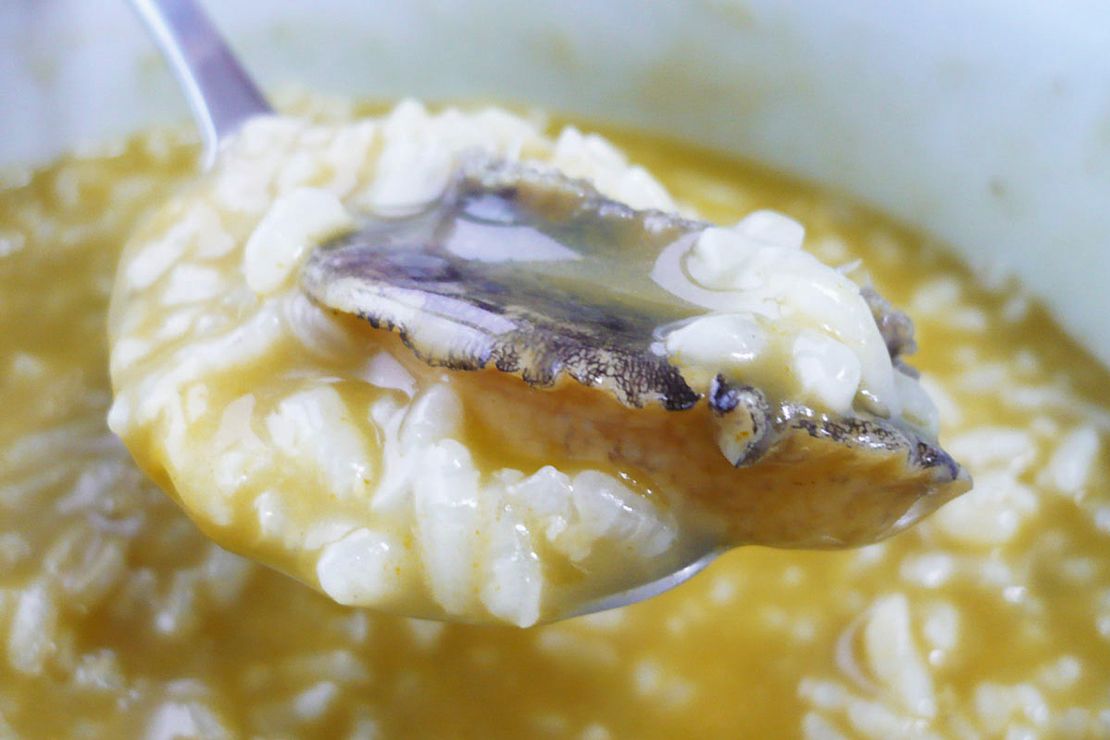
Here’s another best of Jeju Island dish – savory rice-based abalone porridge that takes its greenish hue from the innards of the abalone. It’s not the prettiest food in the world, but after a few divine bowls, visitors may change their minds about chartreuse as an appetizing color.
For many Koreans, the soup is a ritual on their trips to Jeju.
The Ojo Haenyeoeuijip is run by the haeonyeo, or female divers, of the Ojo county, who dive for abalone each day.
Ojo Haenyeoeuijip; 3 Ojo-ri, Seongsang-eup, Seogwipo-si, Jeju Province
Attractions
Jeju Olle
“Olle” is Jeju dialect for the path between street and doorstep. But the Jeju Olle is a series of walking paths that stretch across the southern coast of the island, winding through forests, grassy volcanic cones, villages and rare mountain vistas overlooking the sea.
Walking at least a section of one of the routes along the Jeju Olle, which adds up to more than 200 kilometers (124 miles) of footpath, is one of the best ways to get acquainted with the island.
There are 25 different routes to choose from, and they’re organized by level of difficulty on the official Jeju Olle website.
Route 1, the first established Olle route, is a good place to start. The path begins at Siheung Elementary School, and involves scaling some volcanic cones, but the views make it worth the effort.
Jeju Olle, Route 1 starting point at Siheung Elementary School, 841-5, Jongdal-ri, Gujwa-eup, Jeju-si, Jeju Province
Halla Mountain
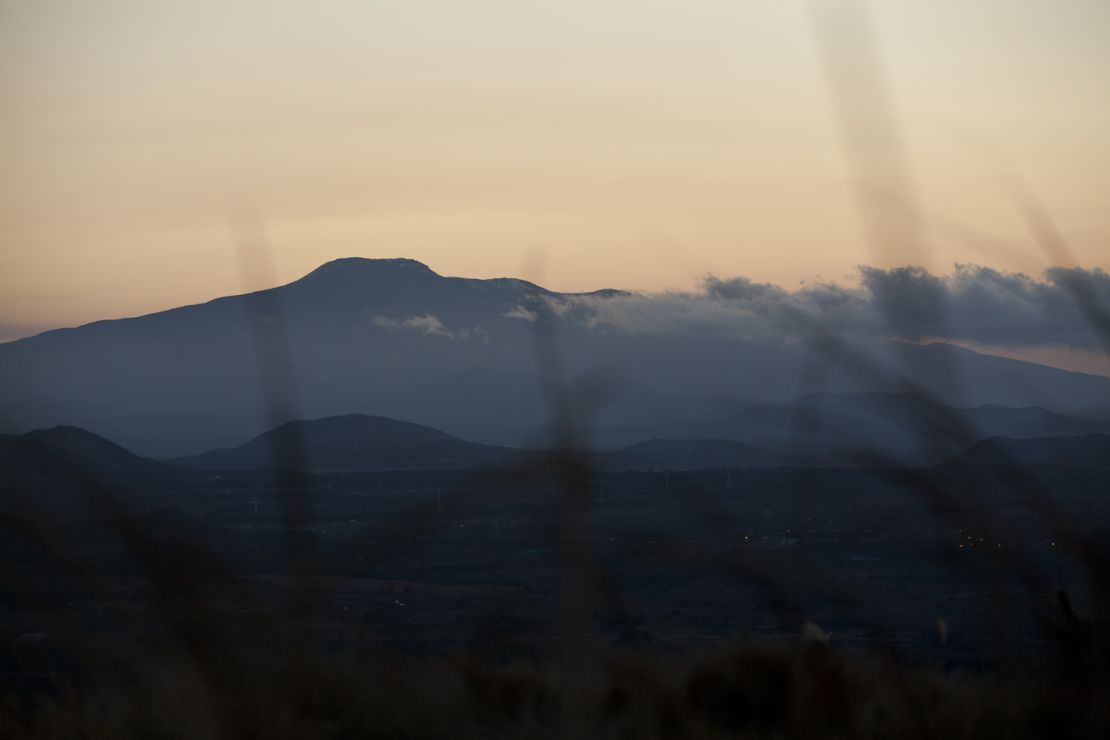
Jeju Island is at its essence a volcano in the sea. The mother volcano is Halla Mountain, no longer formidable as a volcano – it’s been dormant for tens of thousands of years – but still South Korea’s tallest peak at 1,950 meters (6,397 feet) above sea level.
The mountain, the surrounding Hallasan National Park and the volcanic cones have collectively amassed an extensive list of national and UNESCO designations for their biodiversity.
But none of these honors really convey the sheer scale of the mountain, or the beauty of the flora that change character at higher elevations.
The number of identified plants alone amounts to more than 1,800, and the place is also home to thousands of different animal species.
A trek to the peak is worth it for the sight of Baekrokdam, the volcanic crater-turned-lake that tops the mountain. Starting at the Seongpanak Entrance, the 9.6-kilometer (6-mile) hike to the summit takes about five hours. It’s a true best of Jeju Island experience.
Halla Mountain, Seongpanak Entrance; San 137-24, Gyorae-ri, Jocheon-eup, Jeju-si, Jeju Province
Horseback riding
Jeju Island has long had a reputation for finely bred horses and horseback riding, with its own breed of island pony, the jorangmal, which have been bred and raised on the island for hundreds of years.
OK Horse Ranch, 3138 Seongup-ri, Pyoseon-myeon, Seogwipo-si, Jeju Province
Eoseungsaeng Horse & Deer Ranch, 14-1, Nohyung-dong, Jeju-si, Jeju-do (14-1, Wonnohyeongnam 1-gil, Jeju-si, Jeju Province
Udo
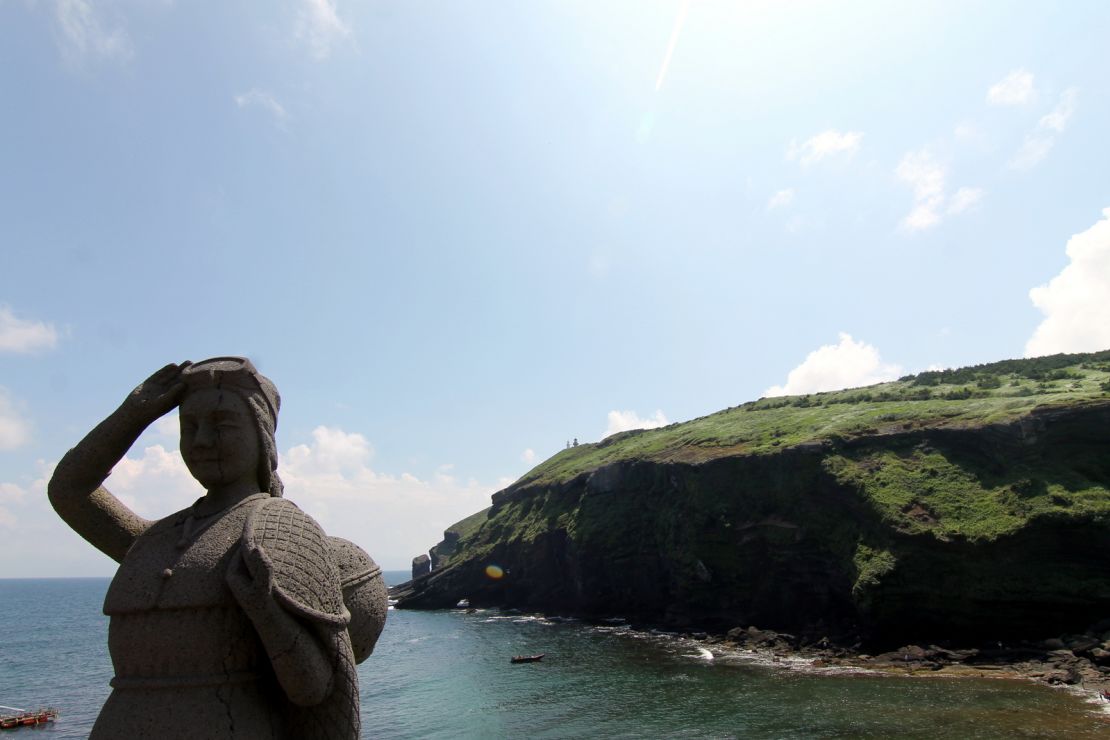
This diminutive, exquisite island of white beaches and black lava cliffs lies just a few kilometers off the Jeju coast and is accessible via a 15-minute ferry.
With a surface area of less than six square kilometers and a population of less than 2,000, it’s small enough to tour by foot in one afternoon.
The tiny island is worth visiting for the photogenic and blindingly white Seobin “White Sand” Beach alone, which is Korea’s only coral beach.
Seongsan-ri, Seongsan-eup, Seogwipo-si, Jeju Province
Seongsan Ilchulbong
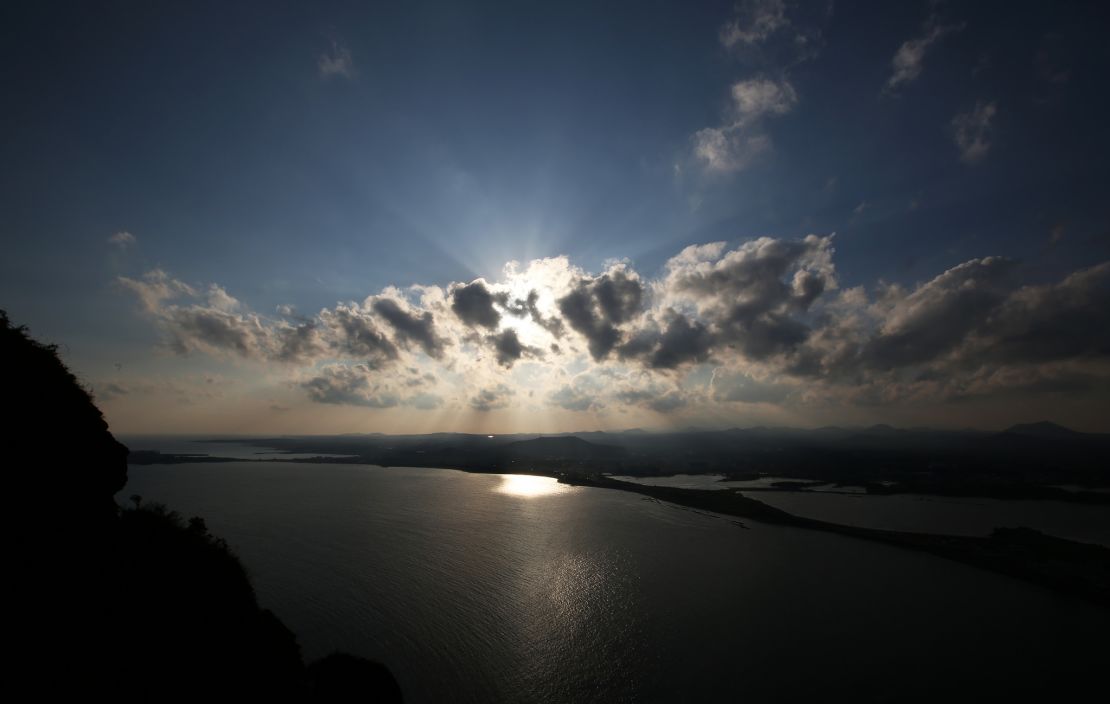
Seongsan Ilchulbong, which literally means “Sunrise Peak at Seongsan” is unsurprisingly famous for its spectacular sunrises.
The trapezoidal silhouette of this 182-meter volcanic cone is dramatic.
The crater at the top is accessible from the nearby village via a sloping, grassy hill. Visitors can walk along the ridge of the 600-meter-wide crater and admire the view out to sea or down toward the village.
Seongsan Ilchulbong, 284-12, Ilchul-ro, Seongsan-eup, Seogwipo-si, Jeju Province
Beaches
Hitting the beach is a best of Jeju Island activity.
While in some sense the entire province is bordered by beaches (if not cliffs), the two model beaches are Hyeopjae Beach and Jungmun Beach.
White sands and water in shades of tropical blue are a given, as is Mount Halla as a distant backdrop. Both beaches have nearby caves to explore.
Jungmun is more suitable for water sports thanks to more hard-hitting waves, while Hyeopjae supports more staid activities with its shallow waters.
Jungmun Beach, 3039, Saekdal-dong, Seogwipo-si, Jeju Province
Hyeopjae Beach, 2497-1 Hyeopjae-ri, Hallim-eup, Jeju-si, Jeju Province
Teddy Bear Museum
Teddy Bear Museum is a quirky, elaborate museum specializing in adorable teddy bear tableaus modeled after famous paintings or dressed in period costume, as well as designer teddy bears too expensive to be called toys.
The collection includes an impressive array of antique teddy bears and the smallest teddy bear in the world.
It’s a G-rated alternative to Loveland (see below), especially for travelers with kids.
Teddy Bear Museum, 31, Jungmungwangwang-ro 110 beon-gil, Seogwipo-si, Jeju Province
Jeju Loveland
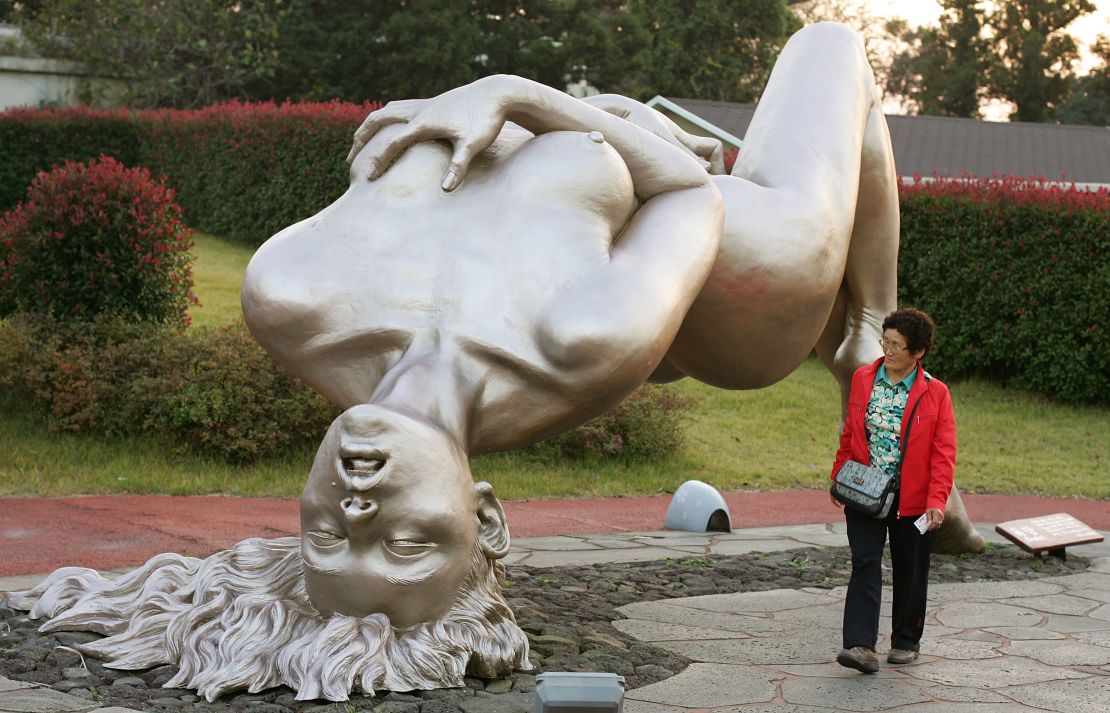
The innocuous official name is often dropped for the frequently-used moniker, “that sex museum,” and understandably so, because that’s what Jeju Island and its sculptures celebrate: sex, eroticism and everything to do with human sexuality.
For those imagining a pornographic peep show, the various dioramas and 140 statues of larger-than-life couplings, phalluses and other creative representations of sexuality from around the world are candid but not (too) perverted, and the park maintains a sense of humor that keeps it cute and cheeky.
A good stop for shy honeymooners?
Jeju Loveland, 680-26, Yeon-dong, Jeju-si, Jeju Province, South Korea
Manjang Caves (Manjanggul)
The Manjang Caves are actually an extinct lava tube – the longest tube on Jeju Island, to be specific, at 13 kilometers (8 miles) long.
It encases the largest recorded lava column in the world, which is 7.6 meters (25 feet) tall.
Visitors cannot traverse the entire length of the tube, but even a sampling is intriguing.
Manjanggul, 41-3 Gimnyeong-ri, Gujwa-eup, Jeju-si, Jeju Province
Haenyeo Museum

One of the most fascinating elements of Jeju’s history is the culture of haenyeo – literally “sea women.”
These tough, real world mermaids traditionally made their living (and supported their families) by diving for abalone and shellfish without the aid of scuba gear.
Agricultural tools in glass displays and educational videos might not sound like most people’s idea of glam, and compared to some of the other available attractions, the Haenyeo Museum can be a bit dry. But if you’re in the area, it’s a nice educational stop that provides solid background on haenyeo.
Haenyeo Museum, 26, Haenyeobangmulgwan-gil, Gujwa-eup, Jeju-si, Jeju Province
Jusangjeolli Cliffs
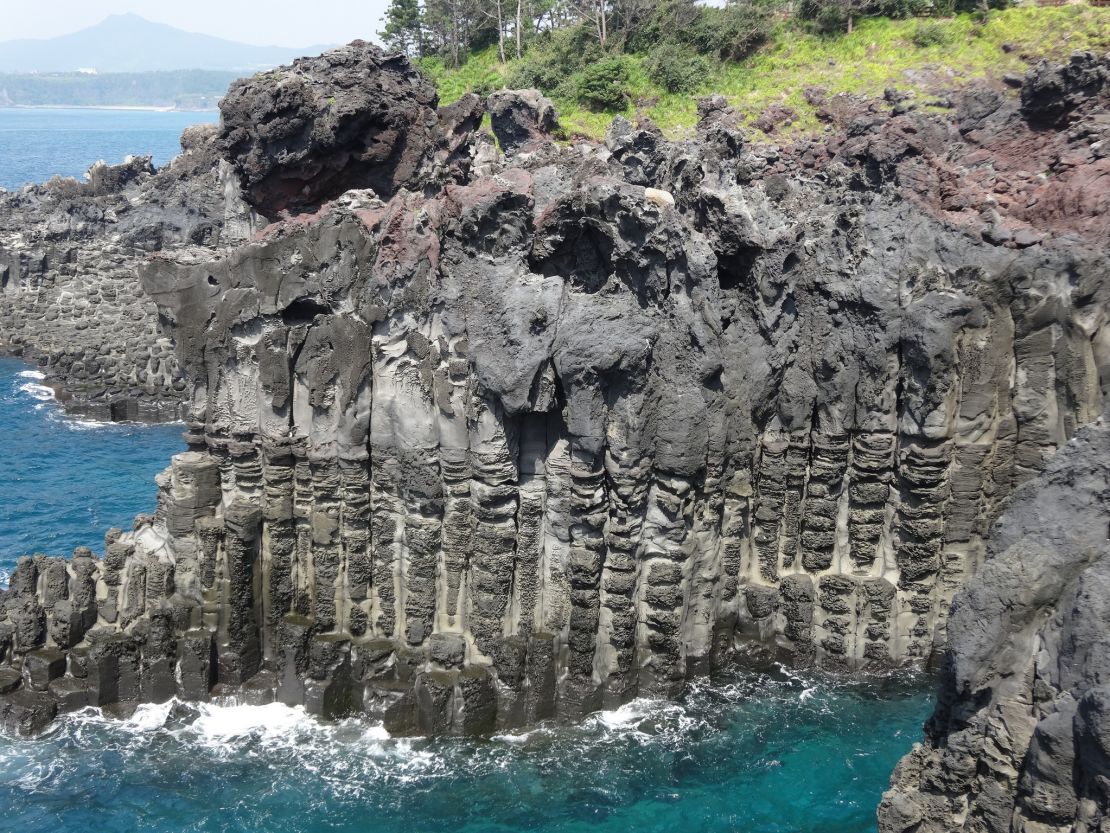
Jeju Island’s volcanic past makes the island’s rock formations peculiarly impressive.
One example: the dramatic shoreline of the Jusangjeolli Cliffs, National Monument No. 443. Located near Jungmun Beach, the cliffs are comprised of rectangular pillars that look like they were carved by human hands.
Credit, of course, goes to the lava.
Jusanjeolli Cliffs, 2663, Jungmun-dong, Seogwipo-si, Jeju Province
Editor’s note: This article was previously published in 2013. It was reformatted, updated and republished in 2017.




